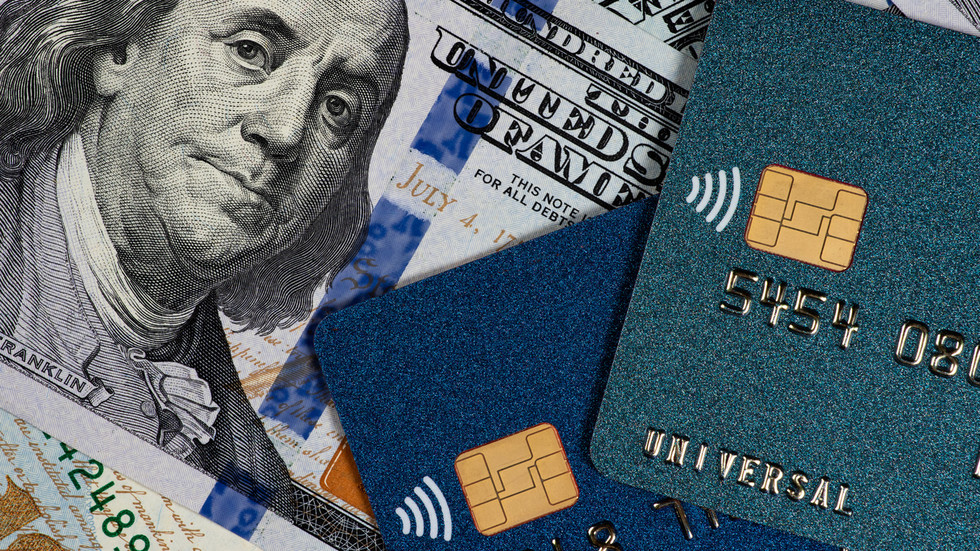
Balances have soared by a record $150 billion year-on-year

© Getty Images / Dmytro Skrypnykov
US credit card debt continued to surge in July-September this year, marking the eighth consecutive quarter of year-over-year increases, economists at the New York Federal Reserve bank said in a report this week.
According to their calculations, credit card balances increased by $48 billion (4.7%) from the previous three months and by $154 billion on an annual basis, the highest increase since records began in 1999. This brought the total outstanding credit card debt to a new record high of $1.08 trillion.
Meanwhile, mortgage balances also surged to $12.14 trillion, while student loan and auto loan balances rose to $1.6 trillion each.
Total household debt grew by $228 billion during the reporting period, largely due to credit cards and student loans, and reached $17.29 trillion.
Researchers noted that more and more households were having difficulty managing their debt amid persistently high inflation and rising interest rates. For instance, nearly 9.5% of credit card balances were more than 90 days delinquent in the reporting period, the report said, up from 8% in the second quarter.
“The increase in balances is consistent with strong nominal spending and real GDP growth over the same time frame. But credit card delinquencies continue to rise from their historical lows seen during the pandemic,” researchers from the New York Fed said in a statement that accompanied the data.
“The transition rate into delinquency remains below the pre-pandemic level for mortgages, which comprise the largest share of household debt, but auto loan and credit card delinquencies have surpassed pre-pandemic levels and continue to rise.”
READ MORE: Tough times ahead for US consumers – strategist
The researchers noted that the spike in households transitioning into delinquency was “surprising” given the relative stability of the US economy and labor market. While the trend could stem from changes in lending standards, it could also signal “real financial stress,” they concluded.
For more stories on economy & finance visit RT’s business section




